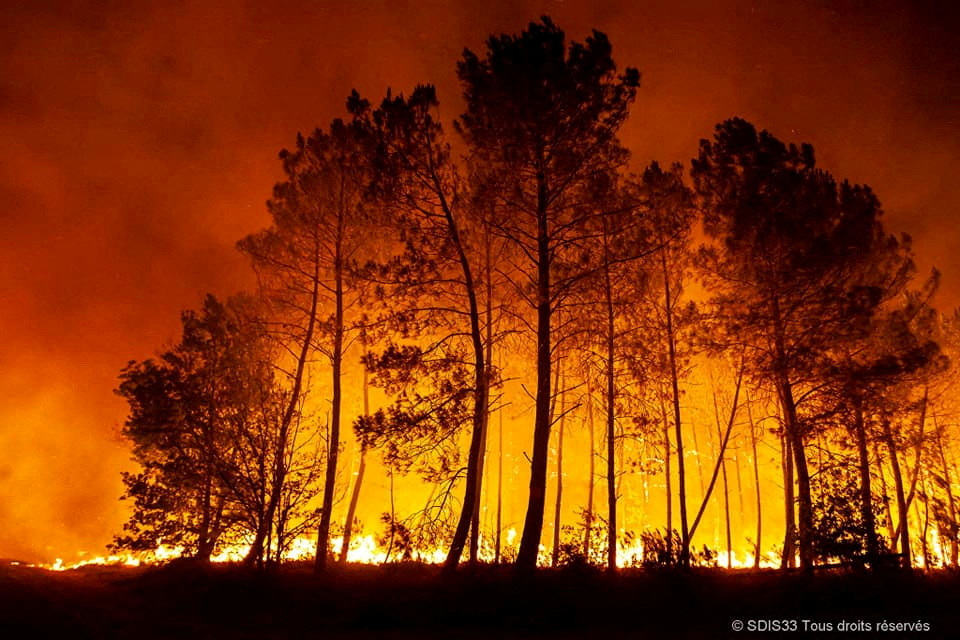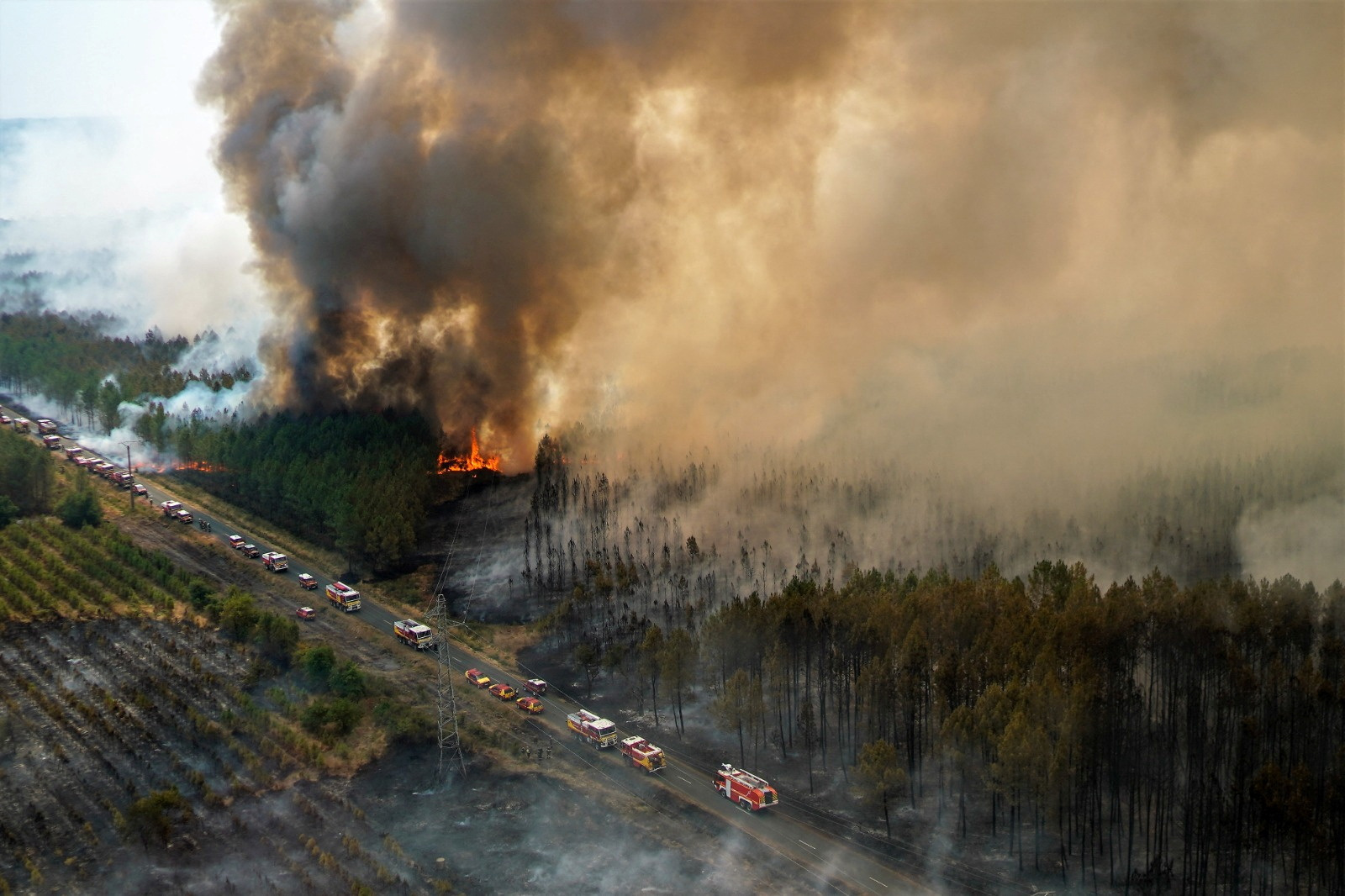The main purpose of this ongoing blog will be to track planetary extreme, or record temperatures related to climate change. Any reports I see of ETs will be listed below the main topic of the day. I’ll refer to extreme or record temperatures as ETs (not extraterrestrials).😉
Main Topic: Where There Is Smoke There Are Carbon Emissions…Case in Point …France
Dear Diary. Today let’s briefly discuss positive climate feedbacks. As we have seen, major heatwaves usually lead to drought, which then make any vegetation ripe and tender for wildfires. All wildfires release carbon stored in trees and shrubs back into the atmosphere, which in turn adds to global temperature averages, leading to more extreme warmth and then more drought.
As climate scientists and activists, we are trying to keep fossil fuels emissions down such that this vicious cycle doesn’t destroy our environment. According to scientists like Dr. Michael Mann, we still have some wiggle room to derail this cycle of drought wildfire drought wildfire before global averages get above +1.5°C above preindustrial conditions. After Biden’s passage of the Inflation Reduction Act, which is the first multibillion dollar climate aid package from the U.S. government, there is a lot of hope this week.
Let’s look at France as a case in point. In 2003 France along with many European countries endured one of the worst heat waves in their history, leading to drought then wildfires with a record among of carbon emissions. Fast forward to today and it’s even hotter across France, breaking the record of emissions due to wildfires set in 2003.
Here is a Reuters article with details:
August 12, 2022 5:36 AM PDT
Carbon emissions from French wildfires hit record


1/2
A wildfire burns near Hostens, as wildfires continue to spread in the Gironde region of southwestern France, in this handout photograph released on August 12, 2022. Courtesy SDIS 33/Handout via REUTERS
LONDON, Aug 12 (Reuters) – Ongoing wildfires in France have already released record amounts of carbon into the atmosphere, new satellite data has shown.
The fires, which have burned large parts of the southwestern Gironde region, unleashed nearly 1 million metric tonnes of carbon from June to August, according to the European Union’s Copernicus Atmospheric Monitoring Service (CAMS).
That is roughly equal to the yearly carbon dioxide emissions from 790,000 cars.
In the past two decades, France has averaged around 300,000 tonnes of annual carbon emissions from fires.
The only year that has come close to this summer’s record for France is 2003 — coincidentally the same year that satellite monitoring began. Intense summer heat and dry conditions then saw about 650,000 metric tonnes of carbon released from June to August wildfires.
Emissions data from southwestern Europe offers a “reflection of the size and persistence of the fires,” said Mark Parrington, a senior scientist at CAMS. This, he added, is tied to the region’s plants and trees becoming more flammable under “long-standing drier and warmer conditions”.
Spain also registered record wildfire emissions during a mid-July heatwave, CAMS reported last month. read more By comparison, Portugal wildfires resulted in lower emissions than previous years.
More than 60,000 hectares (230 square miles) have burned so far in France this year, six times the full-year average from 2006 to 2021, according to data from European Forest Fire Information System. read more
While France’s emissions are “fairly negligible” when it comes to global wildfire emissions, said Parrington, the fires have a big impact on regional air quality.
Recent satellite images show a huge smoke plume unfurling into the Bay of Biscay. In addition to carbon, wildfires release other pollutants like Particulate Matter 2.5 which can make people sick. read more
Smoky conditions have also been found to reduce solar energy output, in some cases by nearly half. That is because tiny airborne particles from fires can prevent the sun’s energy from reaching panels.
France’s Gironde region is home to a 40,000-strong solar panel installation that provides power to almost 13,000 people.
Reporting by Gloria Dickie in London; editing by Philippa Fletcher
Here are some “ET’s” recorded from around the planet the last couple of days, their consequences, and some extreme temperature outlooks:
Here is more July 2022 climatology:
Here is more climate and weather news from Saturday:
(As usual, this will be a fluid post in which more information gets added during the day as it crosses my radar, crediting all who have put it on-line. Items will be archived on this site for posterity. In most instances click on the pictures of each tweet to see each article. The most noteworthy items will be listed first.)
(If you like these posts and my work, please contribute via this site’s PayPal widget. Thanks in advance for any support.)
Guy Walton “The Climate Guy”